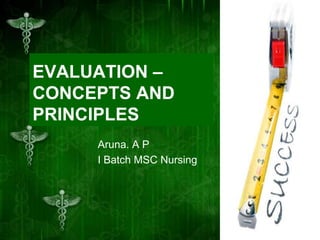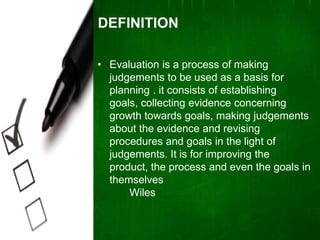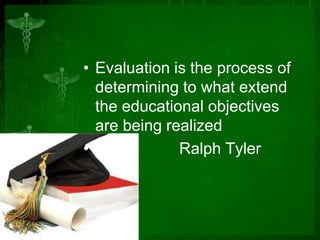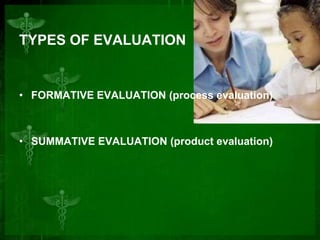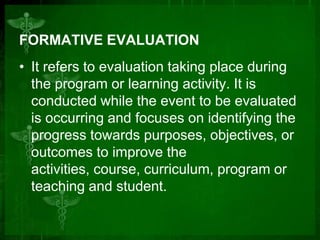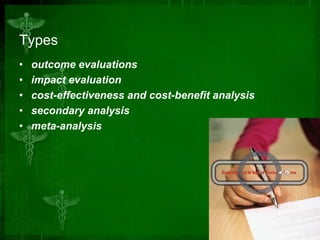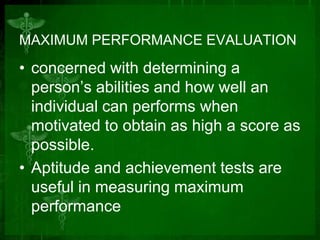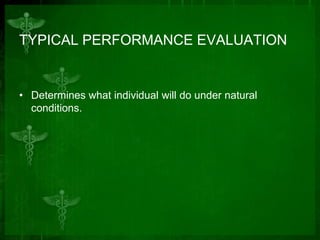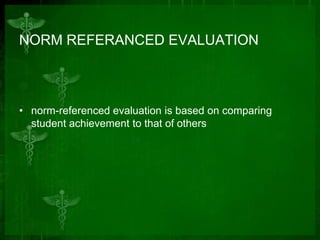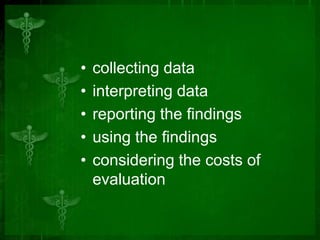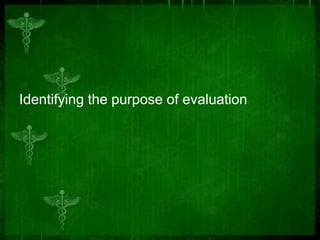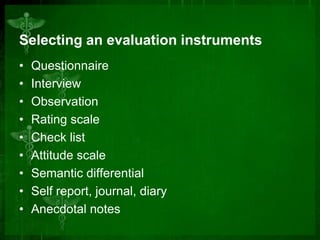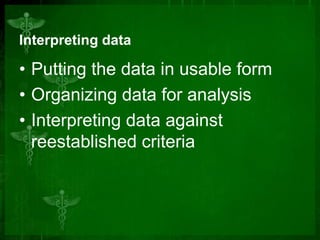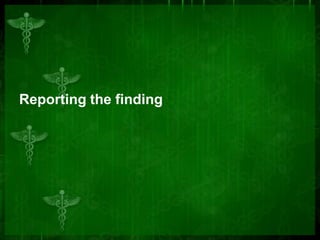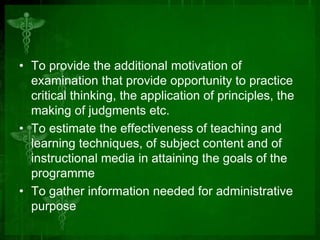This document discusses concepts and principles of evaluation in education. It defines evaluation as a process of making judgements to establish goals, collect evidence of progress, make assessments, and revise procedures and goals based on those assessments. Evaluation is used to improve outcomes, processes, and goals. Formative evaluation refers to assessment during a program to identify progress and make improvements, while summative evaluation examines final effects and outcomes. The document outlines various evaluation types, purposes, characteristics, and models to systematically collect and analyze information to determine how well students are achieving educational objectives.
